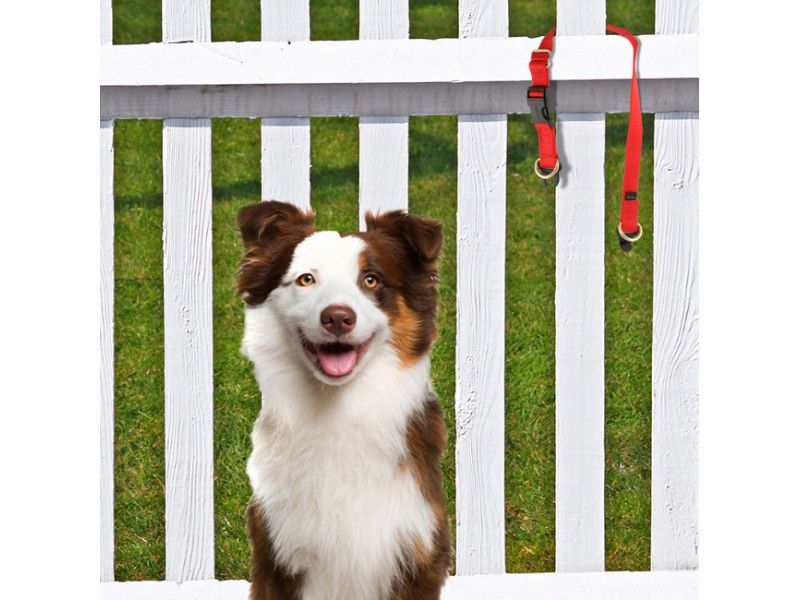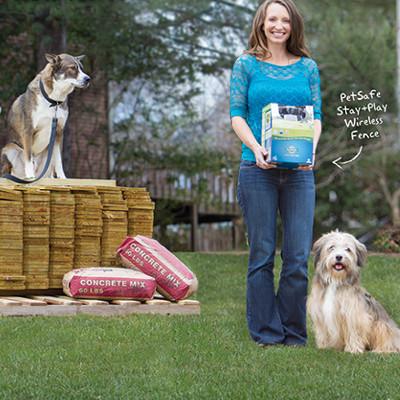Let's say you've just signed the papers on your dream home and you're evaluating options for fencing the yard. Your dog likes to run and roam if given the chance, and you need some help making the call on what type of fence to install. You want to make the most of the landscape while also protecting your dog and your property from harm. It's not just about keeping your dog from running away - it's about potentially saving their life. I am an ER vet and I have seen too many dogs injured or killed because of improper fencing.
When you start looking into the options, you may be greeted by a seemingly endless array of choices; in-ground, wireless fence, wood, chain-link, brick, and on and on. Which one's best? A lot of this decision depends on your particular situation, but don't despair.
Below, I'll run through a few considerations to evaluate before you make the call on any type of fence.
I have a homeowner's association that has strict rules on height, color and style of fence. What do I do?
 WINNER: Wireless or in-ground fence
WINNER: Wireless or in-ground fence
An in-ground or wireless system is likely your best bet. There's no visible component, just a zone of security that your dog will learn and respect in a very short time. The in-ground wire transmits a signal that the collar detects, which makes the collar emit a training tone that gets your dog's attention.
If he proceeds out of the zone of protection, the collar gives him a static correction - not enough to hurt, but enough to get his attention and respect the boundary. Over just a few days, he learns that stopping when he hears the tone means no correction and he stays inside the perimeter. Thanks, Dr. Pavlov!
The only ones who'll know it's there will be you and your dog. Styles come in wireless (where a circular boundary keeps him contained when linked to the static correction collar - more on that below) and a mapping version for unique-shaped yards. In most cases, the wire can be hidden and covered with soil, lawn - even cut into asphalt to traverse your driveway.
I've had 2 wireless fence systems in my life, one of which was used to cover almost an acre. In both cases, the wire was totally out of sight and controller panel (about the size of a box of crackers) was hidden away in the garage. My formerly chicken-chasing dogs learned to live a poultry-free life in just a few days and relations with my chicken-owning neighbors were much improved.
I have a dog who's obsessed with chasing squirrels, runners, and other dogs walking by. Which option's best for keeping him in?
WINER: Traditional fence
For some dogs, the drive to chase, conquer and escape can only be met by a solid wall of fence. When making the call, consider the following factors:
-
 His ability to jump: make sure the fence is tall enough to prevent escape and the jet pack is out of reach
His ability to jump: make sure the fence is tall enough to prevent escape and the jet pack is out of reach - His ability to dig: concrete at the base or a portion of buried fence at the bottom can minimized the chances of digging out.
- Safety: A traditional fence is only as safe as its weakest part. If the gate is left open, or a section rots away and your dog can push through, all you have is a false sense of security that your fence can keep your dog contained. In the vet ER, the gate left open or the board that the dog has pushed aside to get out is one of the most common causes of escape and being hit by a car.
- Local regulations on type and style of fence: You don't want to end up in Fence Jail. The food is awful.
- Cost: a traditional fence can run into the thousands, or the many-thousands if you want to get really fancy and gold-plated .
- Looks: While a fence can beautify a property, some can look great the first year or two, but really appear shabby after a few years. The fences with the strip of lattice at the top are particular prone to looking drab after a few years when the weather takes its toll and some of the slats are missing.
- Neutering: Before you invest in a spendy fence, neutering may decrease hormone-driven roaming behavior to the point that an in-ground fence will be enough to get the job done.
We camp almost every weekend in the summer, and my dog loves to come with us. At home she's contained by the in-ground fence. What can we do when camping to keep her safe?
WINNER: Wireless fence
 As long as you camp where there's an outlet, you're good to go and so is your dog. A portable wireless system gives your dog the same training combination of signal then static correction that she respects at home.
As long as you camp where there's an outlet, you're good to go and so is your dog. A portable wireless system gives your dog the same training combination of signal then static correction that she respects at home.
All you have to do is plug in the small, portable transmitter and set the power to the right level to enclose the space you are camping in. Lead your dog around the perimeter to where she hears the training tone and she'll learn the boundaries of your campsite sooner than you can say are the s'mores ready? Your campground neighbors will thank you, and your dog will be happy you've taken their safety seriously.
Whether you ultimately choose in-ground, wireless or traditional fencing, the old saying rings true: good fences make good neighbors. As an emergency vet, I'd like to add one more aspect to that familiar phrase: good fences make for healthy pets. Keep them securely contained with a good fence and you avoid all the dangers the modern world holds for pets - cars, antifreeze, dog fights and kids with BB guns. Fewer trips to the veterinary ER mean more quality time spent with your pet and life of injury-free health.






